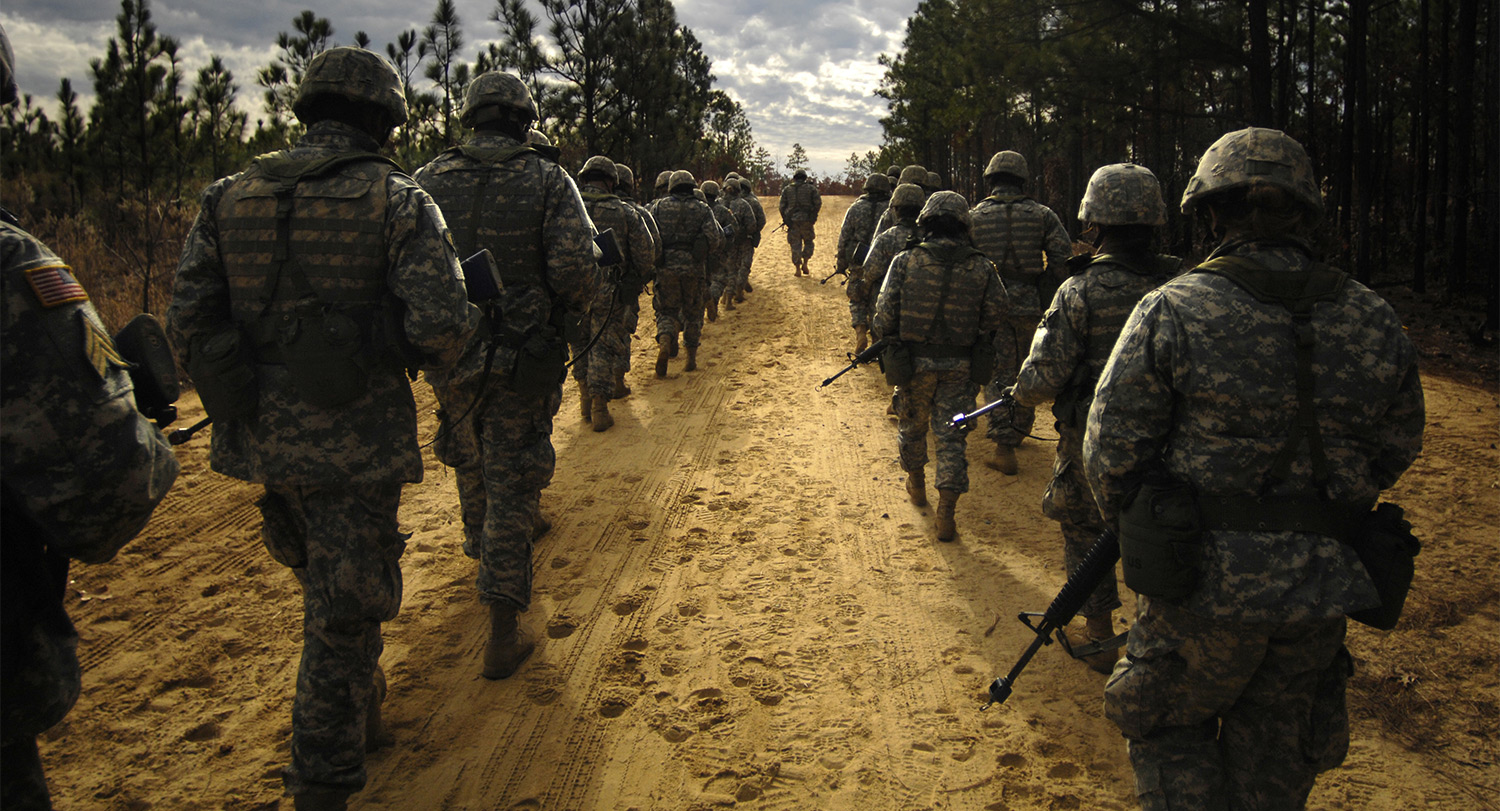
It’s no secret the military has struggled for years to find recruits who can meet physical fitness and weight requirements to begin military training. It’s a costly dilemma – in terms of national security, military readiness and dollars needed to treat injured trainees.
A new study from a team of researchers from several institutions, including the University of South Carolina, found the direct medical cost of treating musculoskeletal injuries among U.S. Army recruits was $14.89 million in 2017. About 48 percent of that amount was used to treat recruits from eight Southern states who suffered injuries that affect the bones, muscles, ligaments, nerves or tendons.
The results are consistent with previous research showing Army trainees from the South have lower physical fitness and higher incidence of musculoskeletal injuries, and that poor physical fitness is a strong predictor of injury risk among Army trainees. But this study put a price tag on what those injuries are costing the country.
“The Department of Defense has known about this problem for quite a long time. There's probably two decades worth of evidence showing that fitness levels of recruits were declining and musculoskeletal injuries during basic training were on the increase,” says Daniel Bornstein, who earned his Ph.D. from USC’s Arnold School of Public Health, was a faculty member at The Citadel and now chairs the military sector of the National Physical Activity Plan. “What's new in the last few years is the identification of Southern states being disproportionately problematic.”
That’s significant because the lack of a qualified pool of recruits has contributed to the Army falling 25 percent – or about 15,000 soldiers — short of its recruiting goals in 2022. A large number of military recruits come from the South, a region that consistently has some of the highest rates of childhood obesity and other chronic diseases.

"A solution starts from early childhood, with having kids grow up and develop in environments that nurture these healthy behaviors."
“These aren't just public health problems. These are very real national security problems,” says Bornstein, who now operates a consulting company at the intersection of fitness, health and national security. “You could argue that it's affecting us with health care costs and so on, but the most direct, and frankly, perhaps the scariest part is we’re having trouble recruiting into our military. We're having trouble keeping people in the military. We're having trouble keeping up with our ‘near peer’ adversaries. And if we go to war? We may lose because we're not physically fit enough to fight the enemy. That's the reality.”
And the problem isn’t unique to the military. Other professions including law enforcement and firefighting also have seen a drop in the number of applicants who can meet physical fitness standards.
A long-term challenge
Experts agree efforts must be made to increase physical activity and physical fitness among all young Americans, particularly those living in Southern states. When a large segment of the population is physically inactive, it can adversely affect society as a whole.
“A solution starts from early childhood, with having kids grow up and develop in environments that nurture these healthy behaviors,” says Michael Beets, an Arnold School exercise science professor and one of the authors of the study about the cost of musculoskeletal injuries in the military. “We're not just talking about physical activity. We're talking about diet. We're talking about optimal levels of sleep. We're talking about reductions of screen time. And so this is a wholesale change that will take at least a generation even if we put everything into effect immediately.”
It is clearly an issue that is broad, deep and long-standing, with few easy answers or quick fixes.
And it’s a research area that faculty at the University of South Carolina have been studying for decades.
“Yes, we can do some things to get troops ready … but really we're talking about system-level changes that would impact kids from the early stages of life to have them grow up in these more optimal, health promoting environments,” Beets says. “This is challenging and there’s not an easy solution. There are the immediate needs, and then there are the long-term kind of changes. The key is working with policymakers who have the opportunity to create more favorable environments for healthy food and access to physical activity and on and on and on.”
Shawn Arent, professor and chair of the exercise science department in the Arnold School, says the work being done to identify the problems finding recruits healthy enough to enter the military and successfully complete basic training is a part of that bigger national problem related to obesity and health.
“The information is out there to try to change public policy in terms of physical fitness requirements,” Arent says. “These issues that are plaguing the military are things that are addressed in the National Physical Activity Plan.”

"From children to military recruits, active duty service members and military veterans, we have developed a line of research to optimize human performance and health across this lifespan."
Working with the military
The Arnold School’s exercise science department boasts some of the nation’s top physical activity researchers, including Russell Pate, an exercise physiologist who leads the university’s Children’s Physical Activity Research Group and has been researching physical fitness and the health implications of physical activity for decades. He was one of the key developers of the National Physical Activity Plan, a comprehensive set of policies, programs and initiatives designed to increase physical activity and foster a national culture that supports physically active lifestyles to improve health, prevent disease and disability, and enhance quality of life.
The National Physical Activity Plan wasn’t designed around the military’s needs; it was focused on the whole country’s needs. But the two reflect each other.
Arent says USC’s deep ties to the military are reflected in the work researchers do with Special Operations Command, Fort Jackson, the Department of Defense, the Army and ROTC.
“For me, it's that entire pipeline of what USC represents. We have long-standing programs and research projects in place that are trying to simultaneously solve that problem and take the next steps,” Arent says. “From children to military recruits, active duty service members and military veterans, we have developed a line of research to optimize human performance and health across this lifespan. USC in many ways is leading the charge in this area and providing information that can be implemented and have real policy impact. ”
That includes placing alumni who are qualified for positions in military settings – as strength and conditioning coaches, for example. It also means a concerted effort to do the research to help guide military leaders and the Department of Defense on physical activity and health concerns.
“I think that our ability to educate and train the next generation of those who are going into the military and those who will work with the military to continue to facilitate recruiting healthy service members is really, really key,” Arent says. “Even if they are not directly working with the military, there are a lot of people here at USC whose research has relevance for the military. Our research has translational value that can be used to inform and improve other areas of human performance and health as well.”